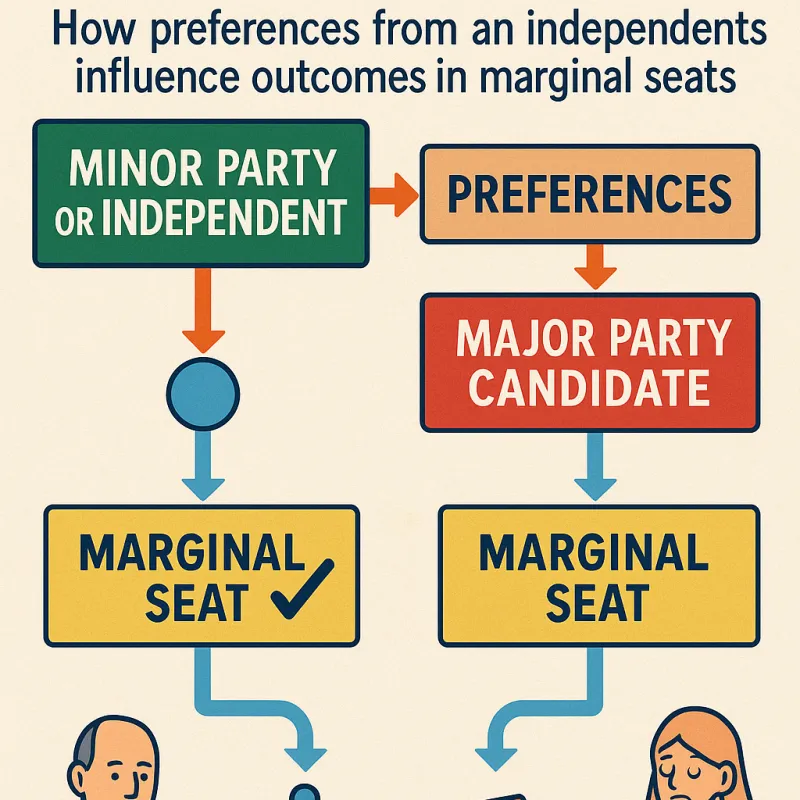Preference flows are expected to play a significant role in determining winners in tight contests, such as the three-cornered race in Calare.

If you thought your first-choice vote mattered most—bless your heart. In 2025, preferences are the real kingmakers, and they’re messier than a group project at uni. With both major parties flailing around 33–35% primary support, the real power lies in who voters grudgingly number second, third, or fifth while muttering “they’re all the same anyway.” Take Kylea Tink—North Sydney’s resident teal queen—who only bagged 25% of first-preference votes last time but walked into Parliament on a tidal wave of preferences.
Multiply that chaos across marginal seats like Hasluck, Wentworth, and Higgins, and you get an election map that looks more like a Sudoku puzzle than a democracy. Minor parties and independents are quietly licking their lips. Everyone from climate-focused teals to angry tradie micro-parties are cutting preference deals like it’s the mafia—but with more recycled paper.
Even a 3–5% preference swing could change everything in close contests. Suddenly, your cousin’s weird vote for the “Freedom Sausage Coalition” might tip the balance in a seat that decides who gets to run the country. Oh, and let’s not forget the 7% of voters who are still undecided. Translation: they haven’t tuned in yet and will panic-pick someone two minutes before polls close—likely based on vibes, a meme, or who annoyed them least on TV.
Sources: TKW Research, Guardian Australia (19 April 2025)
Comments (0)
Login to leave a comment.
